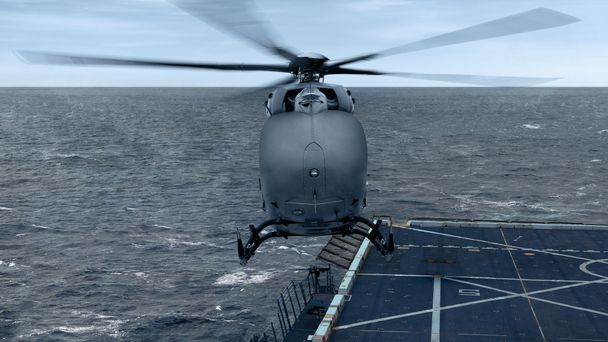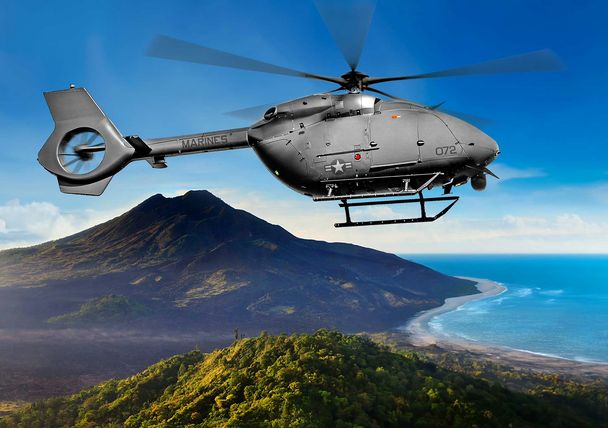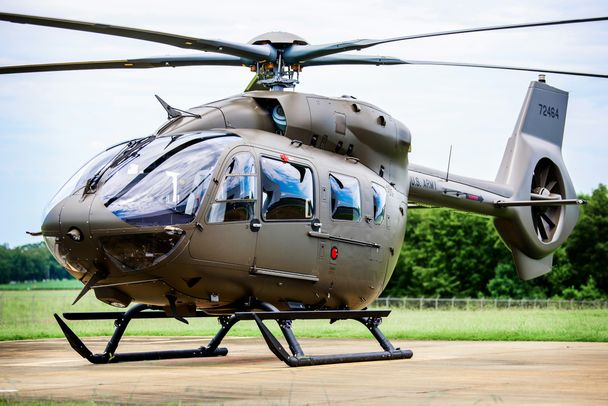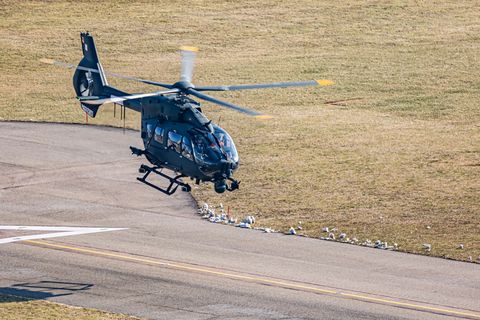The Lakota: the all in one UAS

The array of possibilities unmanned aerial systems (UAS) bring to vertical lift operations is generating increasing interest. The United States Marine Corps (USMC) is convinced, awarding Airbus US Space & Defense Inc a contract to develop an unmanned variant of the UH-72 Lakota. Senior Manager, Business Development and Strategy, Carl Forsling, explains the value and challenges of integrating the versatility of Airbus’ range into a UAS.
It’s been 10 years since an EC145 was flown as an optionally piloted vehicle (OPV). In the subsequent decade, unmanned assets and their interoperability with traditional vertical lift solutions have become even more of an industry priority. Fittingly, it is a version of the H145, the UH-72 Lakota that is currently in the process of being adapted to fly unmanned missions for the USMC.
Unmanned: low-risk support
The USMC’s intention to deploy UAS is easy to understand. As Carl Forsling notes, “the amount of cargo they must transport over vast areas simply demands the unmanned system delivery. Over time, a manned system can only fly so many hours per day, and yet there are these unmanned long-duration missions over extended distances. It’s well suited for it. The other aspect is that the increased threat requires unmanned because it means a person won’t be lost.”
A potential mission might be resupplying marine units of 60 to 70 people distributed throughout what is known as the first island chain. The capability of ferrying cargo to these forward bases that are going to be operating independently stretches the limits of traditional systems. An unmanned platform is better suited to keep up with demand and isn’t risk worthy.

Why the Lakota?
The Lakota’s versatility makes it a very interesting aircraft for unmanned operations. Whereas some drones or UAS are designed for singular purpose, an unmanned Lakota can adapt itself to any H145 operation – and more. As Forsling explains, “with the right architecture, the interchangeability that this unmanned system can offer… It can carry a 2,000 -pound missile reload, but also 2,000 pounds that could be air launched effects. It could be an electronic warfare system. It could be anything - and the flexibility that this approach has, based on a very proven Airbus platform, by adding the computer architecture and the unmanned systems, allows it to do a plethora of missions that it wasn’t able to do before.”
Of course, an adapted Lakota is not simply a clean sheet design and the unmanned version can also benefit from lessons learned from throughout the entirety of Airbus’ range and demonstrators. Forsling, for one, can already see the benefits: “we’re able to utilise a lot of the resources and benefit from some of the technologies that have been used on previous platforms and, where appropriate, leverage some of that to help us accelerate this project into the field.”

New controls
Notwithstanding Airbus’ significant experience and expertise, the project is not without its challenges. Forsling points out that “it involves turning an aircraft that has traditional control systems—a combination of manual flight controls, push-pull rods, bell cranks into a hydraulic control system—into a fly -by -wire aircraft that a computer can control, that definitely involves some engineering work!” A challenge it may be, but one that Airbus is well placed to overcome. The next phases of the project will involve system integration, ground tests and flight tests over the next couple of years.
Beyond development, Airbus’ approach augurs well for a smooth integration into operations. “Airbus has already fielded unmanned naval rotorcraft in Europe, and obviously we’re able to benefit from that,” explains Forsling. “The UH-72 itself has extensive support networks, so both from a technical standpoint in development, and then as you phase into prototyping and production, you’ve got established products that can be integrated much more smoothly than clean sheet designs.”



